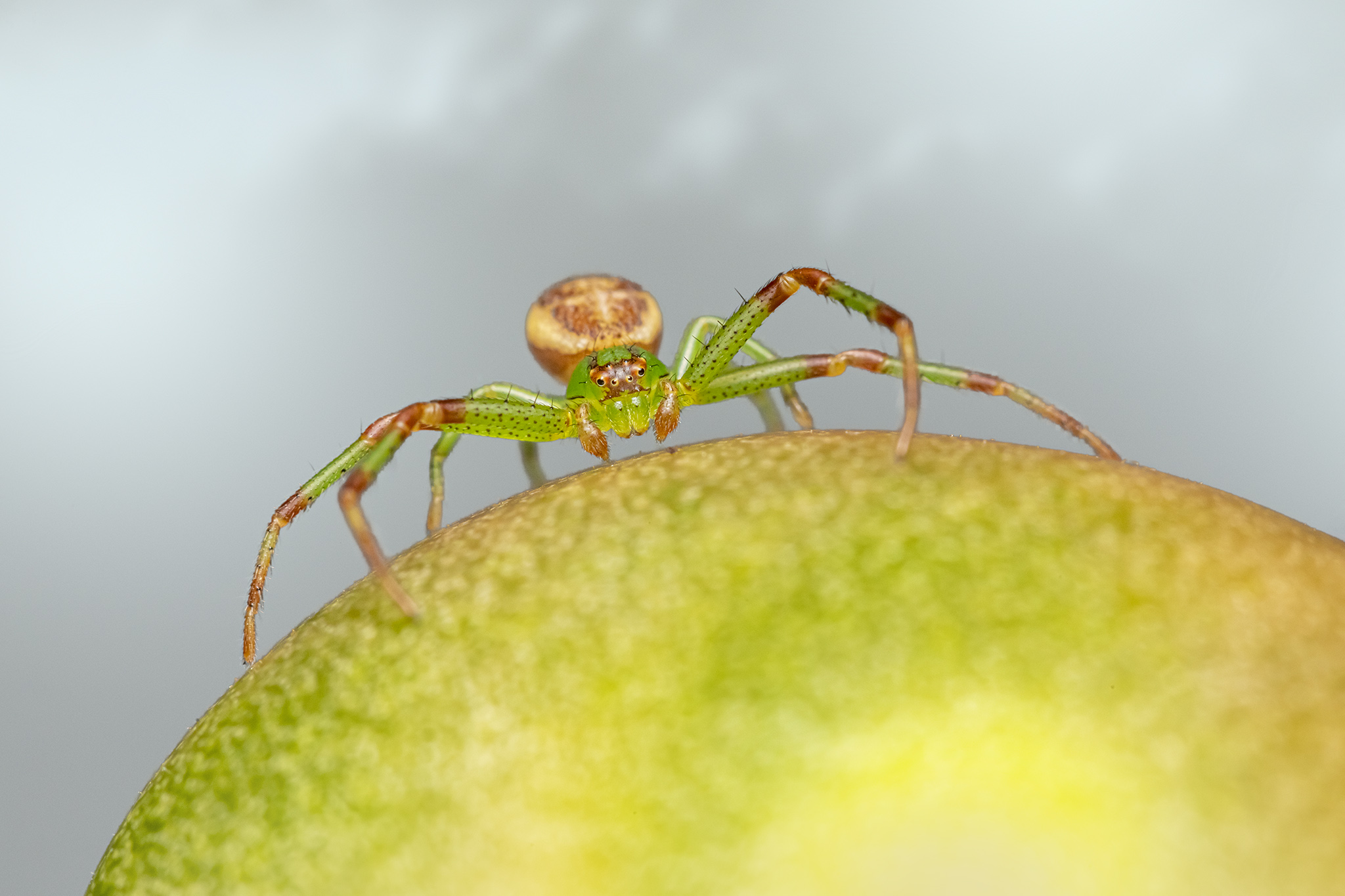The Green Crab Spider (Diaea dorsata) is a fascinating arachnid species known for its vibrant green coloration and distinctive crab-like appearance. Here’s a short review of this remarkable spider:
Appearance:
- The Green Crab Spider is named for its striking resemblance to a crab, with its broad, flattened body and extended front legs resembling crab claws.
- Its vivid green coloration serves as camouflage among vegetation, allowing it to ambush prey with ease.
- Adult females typically measure around 5 to 8 millimeters in length, while males are slightly smaller.
Habitat and Behavior:
- Green Crab Spiders are commonly found in grasslands, meadows, gardens, and other vegetation-rich habitats across Europe, Asia, and North America.
- They are sit-and-wait predators, patiently perching on leaves or flowers, ready to ambush passing insects.
- Despite their crab-like appearance, they are not true crabs but rather members of the spider family Thomisidae, known as crab spiders.
Predation:
- Green Crab Spiders primarily prey on smaller insects, including flies, bees, butterflies, and other spiders.
- They use their sharp, pointed fangs to inject venom into their prey, immobilizing them before consuming them.
Reproduction:
- Like other spiders, Green Crab Spiders reproduce sexually, with males typically initiating courtship rituals to attract females.
- After mating, females lay eggs in silk egg sacs, which they guard until the spiderlings hatch.
Ecological Role:
- Green Crab Spiders play a crucial role in controlling insect populations within their habitats, helping to maintain ecological balance.
- As predators, they contribute to natural pest control, targeting common garden pests and reducing the need for chemical pesticides.
In summary, the Green Crab Spider is a captivating arachnid species known for its unique appearance and predatory behavior. Its role as a natural pest controller makes it a valuable asset in ecosystems and gardens alike.
Views: 28
Subscribe to the newsletter:
